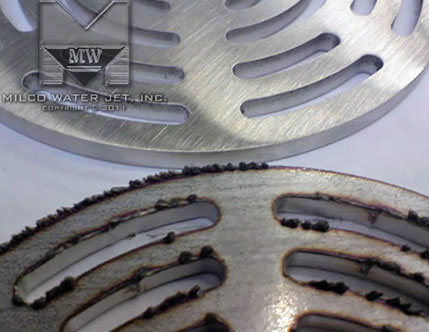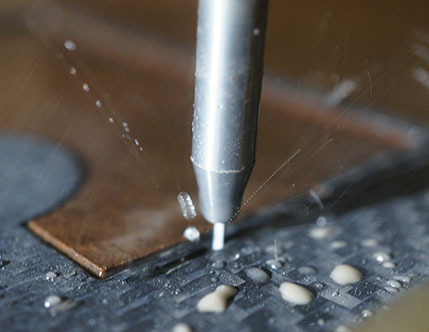Amazing Quality Finish Using Waterjet Machinery
Compared to saw cutting, routing, plasma cut, and laser cutting; Waterjet cut finish stands alone. With a smoother, more sandblasted look, free of burnt edges, chips, burrs, and slag: it can save you in unnecessary finishing costs. Waterjet cutting is in fact considered a “finish cut” and is typically used for signs and displays, most popular for its aesthetics. This transposes over for many different industries because the finish is typically the smoothest and cleanest.
No Heat Affected Zone with Waterjet
Unlike laser or plasma cutting that could cause burning or melting, where the cut areas can become chemically altered due to heat, waterjet cut parts remain unaffected. Water is well known for its insulation and absorption of heat. This can be very critical on applications where the material cannot show any signs of burning or discoloration, or on materials that cannot be cut with laser due to burning; with toxins released into the atmosphere. With waterjet, very little heat is created, generated or transferred to the part. This is extremely handy for working on tool steels, stainless steels, exotic alloys and other metals where heat could change the properties of the metal. This is also true for plastics, acrylics, composites, laminates and phenolic.
The final result of waterjet cuts have has no heat affected zone (HAZ) on the material. With the absence of a HAZ, you can secondary machine without hardening the material. You can also machine parts that have already been heat treated.

